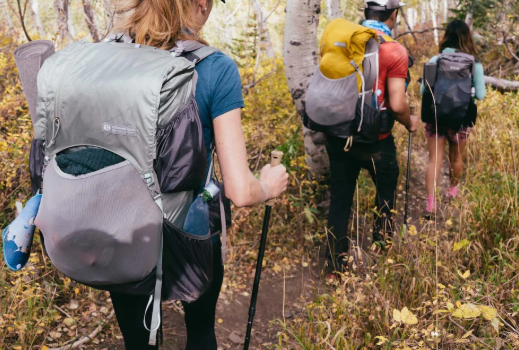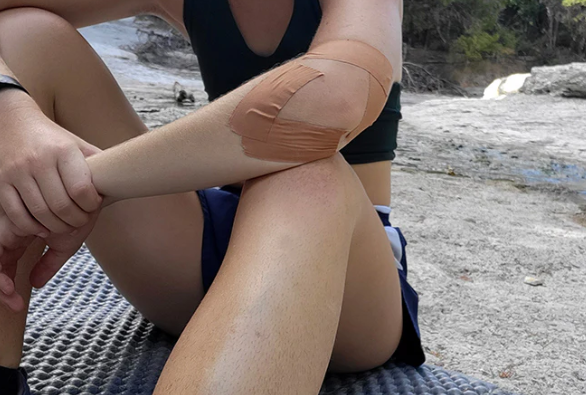
When you’re out on the trail, packing the right gear can make or break your experience. One essential item that can help keep things organized is the infamous “ditty bag.” If you’re not familiar with it, a ditty bag is simply a small, practical bag that holds all the little things you need while backpacking. It’s where you store those items that could easily get lost in the bottom of your pack but are crucial to your survival and comfort.
In this post, I’ll walk you through the contents of my ditty bag and explain why each item is vital to my hiking and backpacking setup. From first aid essentials to toiletries and repair kits, this bag covers all the bases for my outdoor adventures.
What’s in My Ditty Bag?
The contents of my ditty bag are a blend of essential items for maintaining my health and well-being, staying clean, and keeping my gear in working order. While some items are kept inside the bag, others, like my potty kit, are kept in separate compartments or on the outside of my pack for quick access.
First Aid & Toiletries
When you’re hiking, you need a first aid kit that’s both compact and effective. I prefer to keep mine lightweight, so I don’t carry everything under the sun. Instead, I bring the essential items I might need to handle minor injuries or issues until I can reach help or evacuate.
First Aid Kit:
- Pain Relief: A small pill bottle containing Ibuprofen (800mg per dose), Benadryl (1 per day), Immodium (1 per day), Aspirin, and my personal prescription meds.
- Alcohol Swabs: 2-3 swabs for cleaning wounds.
- Gauze: 2-4 squares for dressing wounds.
- Triple Antibiotic Ointment: For cuts and scrapes.
- Burn Relief Gel: In case of burns.
- Bandaids: Just a couple for minor cuts.
- Leukotape: This tape is an absolute game-changer, offering a strong adhesive that helps prevent blisters and keeps bandages secure.
- Vagisil: A surprising but effective solution for preventing and healing chafing.
- Tweezers: For removing splinters, stingers, or ticks.
- Hand Sanitizer: Always a must for hygiene on the trail.
- Bandana: It can be used for various things, from wiping your face to acting as a makeshift tourniquet in an emergency.
- Garmin inReach Mini: A satellite communicator for emergencies if self-evacuation fails.
Toiletries:
While some of these items might seem like luxuries, they make a significant difference in your comfort on the trail, especially on longer trips.
- Sunscreen: Always SPF 30 or higher, plus an SPF lip balm.
- Eyedrops: Great for dry eyes and flushing out debris.
- Bug Spray: I prefer Picaridin because it’s effective against ticks and mosquitoes without damaging gear like DEET does.
- Body Wipes: An easy way to clean yourself, especially when water is scarce or too far away. Helps prevent chafing.
- Toothbrush & Toothpaste: Always travel-sized to save weight.
- Floss: It’s great for personal hygiene, and you can also use it for gear repair.
- Mini Nail Clippers: Keep those toenails in check to avoid discomfort.
Repair Kit
Even with the best gear, accidents can happen, and your equipment might need a quick fix. My repair kit is lightweight and focused on handling small repairs for my most crucial gear.
- Tenacious Tape: Essential for patching holes in tents, jackets, or sleeping pads. It’s perfect for silnylon and DCF (Dyneema) tents.
- Inflatable Sleeping Pad Repair Kit: Includes patches and an alcohol swab for quick fixes on the trail.
- Needle & Floss: Use them for mending gear or even dealing with large blisters.
- Safety Pin: Can be a lifesaver in a pinch for fabric repairs.
- Duct Tape: Wrapped around my trekking pole, it’s a versatile repair material for various emergencies.
- Knife: For cutting tape, cordage, or even fabric, it’s a handy tool to have on hand.
- Bandana: In addition to being a multi-purpose item, it can also help if your gear gets damaged. For example, if your backpack strap gets chewed up, you can use the bandana as a makeshift repair.
Together, these items weigh less than a pound and are stored in a compact DCF roll-top dry bag to keep them dry. The inReach Mini, bandana, and hand sanitizer hang on the outside of my pack for easy access.
Potty Kit
When nature calls, you want to make sure you’ve got the right tools to take care of business in the backcountry. My potty kit is simple, but it’s designed to follow Leave No Trace principles and make things as easy as possible.
- Trowel: I use the ultra-light Deuce of Spades trowel for digging a cat hole.
- Toilet Paper: I pack around 6 squares per day and use natural materials like leaves or stones for the first few wipes when possible.
- Ziplock Bags: One for clean toilet paper and another for used TP.
- Kula Cloth: My favorite pee rag! It’s great for reducing waste and keeping things clean.
- Hand Sanitizer: Always a must after the bathroom, and body wipes come in handy for extra cleanliness.
This setup may seem like a lot to carry, but it’s all about being prepared. Having a well-packed ditty bag ensures you’re ready for just about anything the wilderness throws your way. And while not all of this gear is strictly necessary for every hike, it’s a lifesaver when you’re miles from civilization, dealing with unexpected situations.








